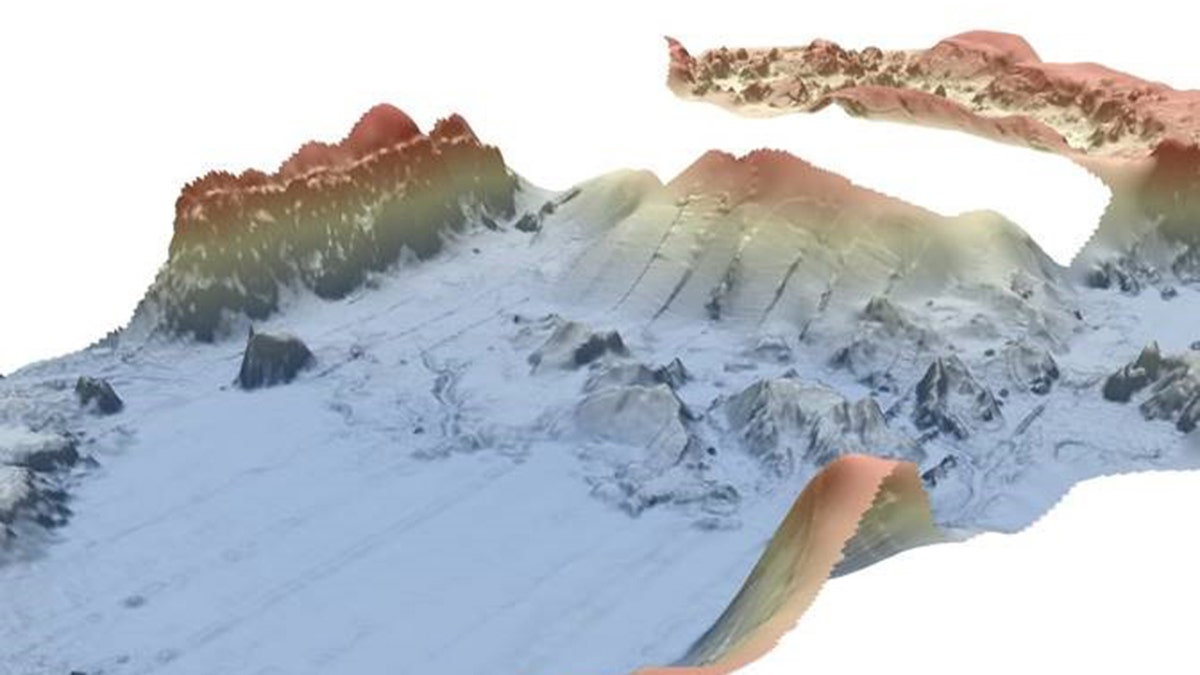Fox News Flash top headlines for Dec. 16
Fox News Flash top headlines for Dec. 16 are here. Check out what's clicking on Foxnews.com
An international team of scientists has mapped huge blocks on the seabed from the recent eruption of the Anak Krakatau volcano.
The Indonesian island volcano erupted in December 2018. The eruption caused part of the island in the Sunda Strait to collapse into the sea, triggering a tsunami that killed at least 430 people in Sumatra and Java.
Located within the caldera of the devastating 1883 Krakatau volcano, Anak Krakatau’s collapse left massive chunks of rock lying on the seafloor, according to scientists. Earlier this year experts mapped the seabed using bathymetric technology, which analyzes underwater terrain.
KRAKATOA PUTS ON INCREDIBLE DISPLAY OF VOLCANIC LIGHTNING
Data on the "landslide runout" was presented by Prof. David Tappin of the British Geological Survey at the recent Fall Meeting of the American Geophysical Union in San Francisco. James Hunt, Ph.D. of the U.K.'s National Oceanography Centre was co-principal investigator of the research.

An image of the Anak Krakatau marine landslide. (National Oceanography Centre/British Geological Survey/United Kingdom Research and Innovation)
“Here, from a major marine survey over the Krakatau caldera area carried out in July 2019, we present new results on the eruption mechanisms of these two events in 1883 and 2018,” the scientists explained in an abstract of their research. “The marine survey acquired seismic and multibeam bathymetry, together with sediment coring.”
The BBC reports that some of the blocks are 70 to 90 meters (230 to 295 feet) high.
INDONESIA WIDENS EXCLUSION ZONE AROUND ISLAND VOLCANO

A map of the Anak Krakatau marine landslide. (National Oceanography Centre/British Geological Survey/United Kingdom Research and Innovation)
New tsunami simulations based on the data were also presented at the Fall Meeting by Prof. Stephan Grilli of the University of Rhode Island. Sebastian Watt, Ph.D. of the U.K.'s University of Birmingham, discussed Anak Krakatau's eruption mechanism.
Anak Krakatau, which means child of Krakatau, is the offspring of the infamous Krakatau volcano that affected global climate with a massive eruption in 1883 that killed 33,000 people.
CLICK HERE TO GET THE FOX NEWS APP

Lava streams down from Anak Krakatau (Child of Krakatoa) volcano during an eruption as seen from Rakata island in South Lampung on July 19, 2018 - file photo. (Photo credit should read FERDI AWED/AFP/Getty Images)
Anak Krakatau first rose above sea level in 1929, according to Indonesia's volcanology agency.
The Asscociated Press contributed to this article.
Follow James Rogers on Twitter @jamesjrogers





















